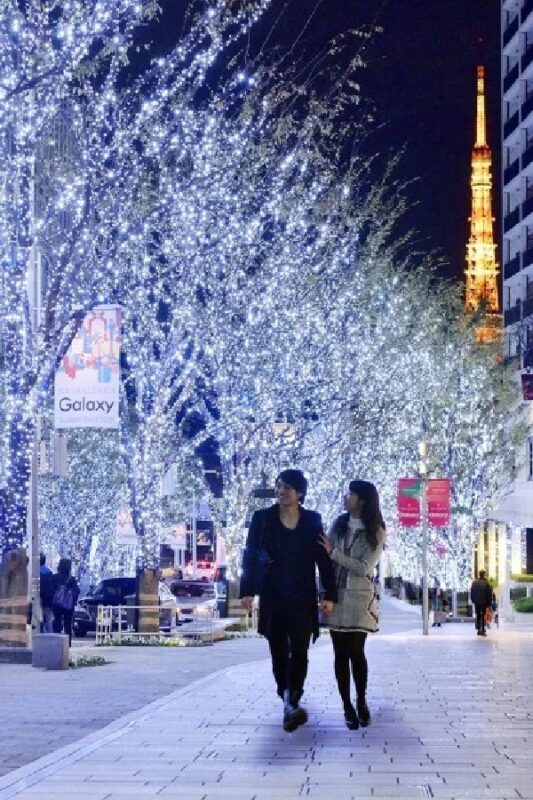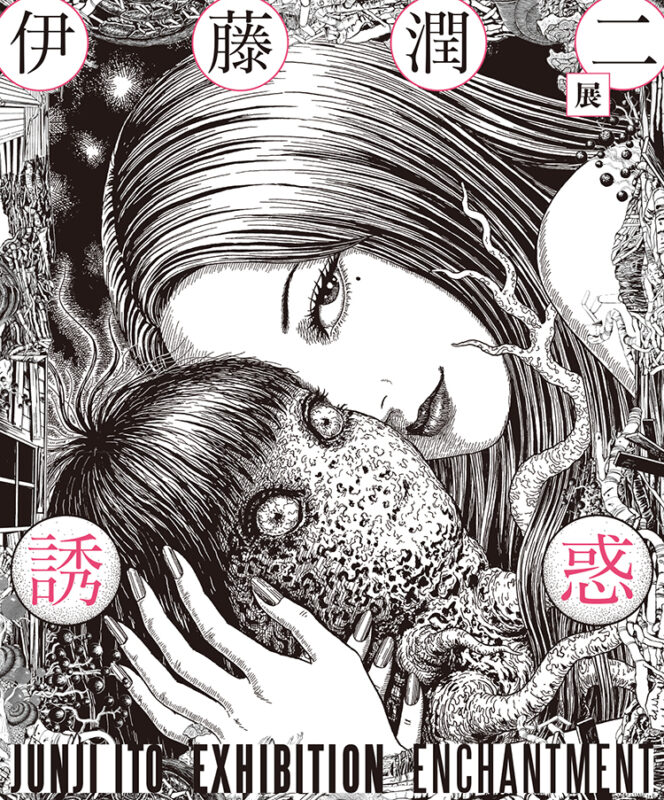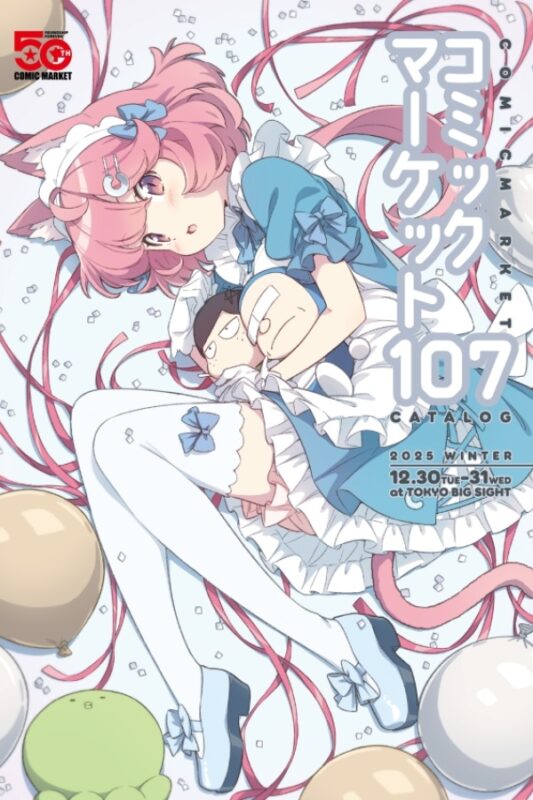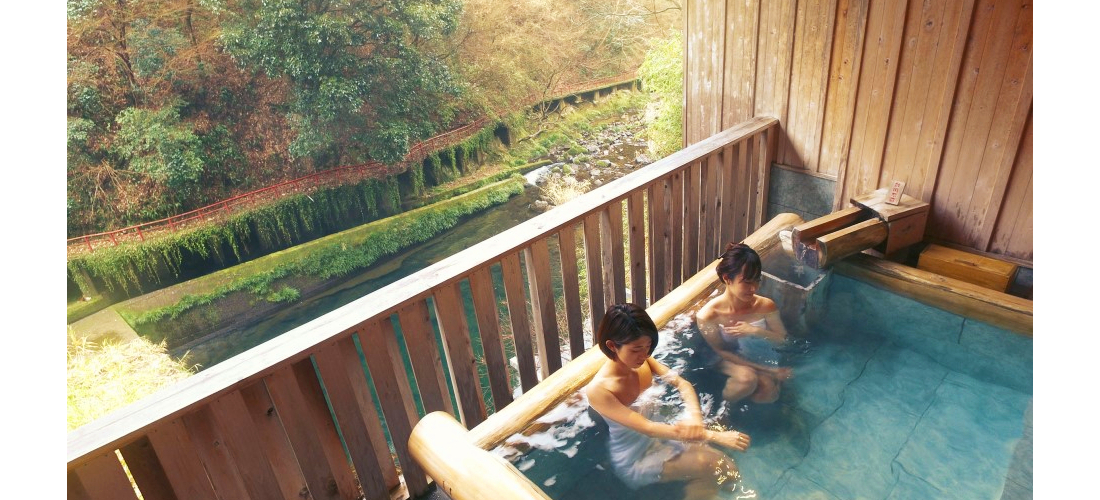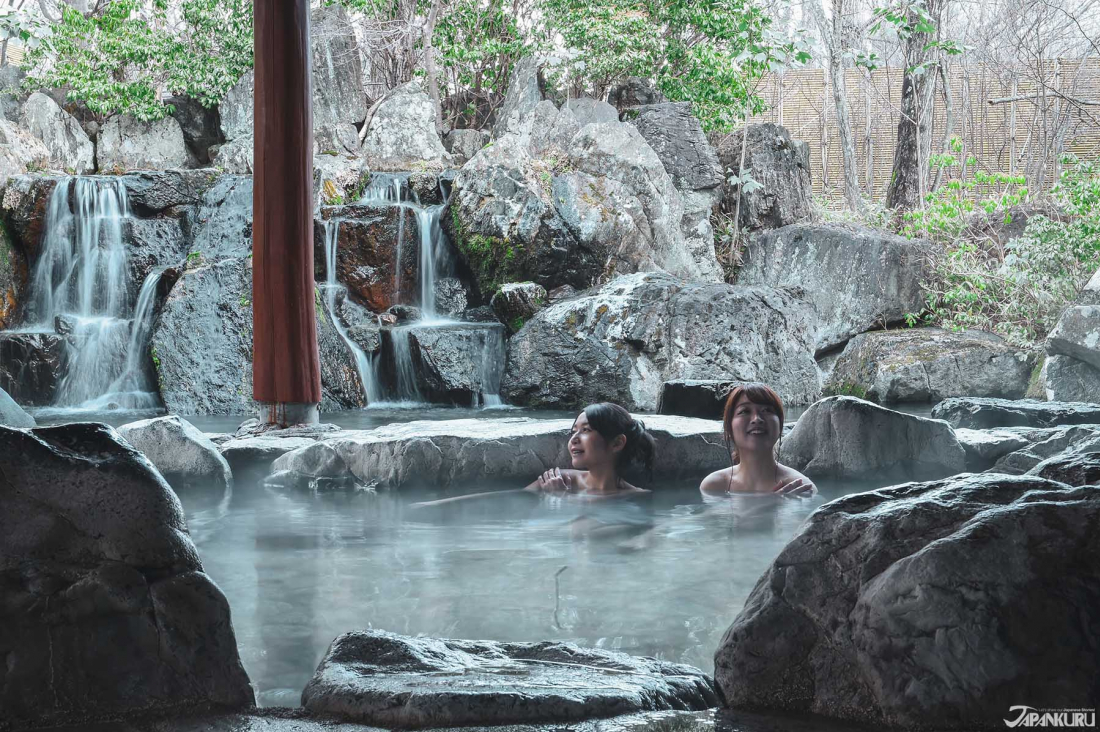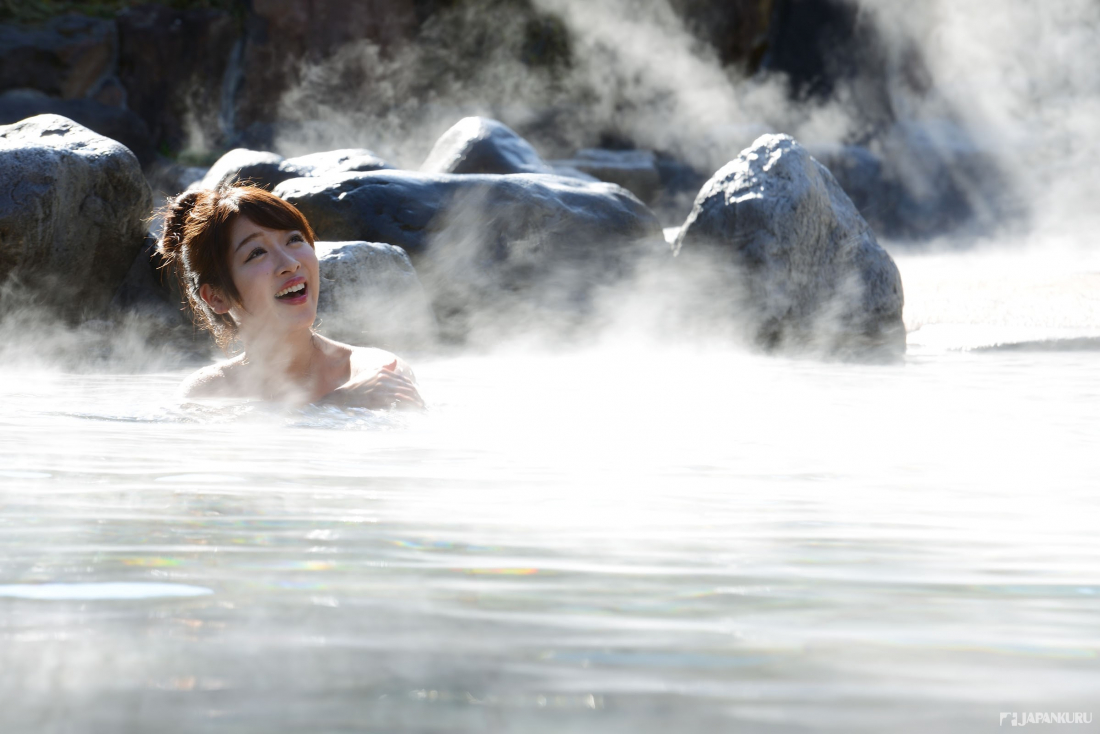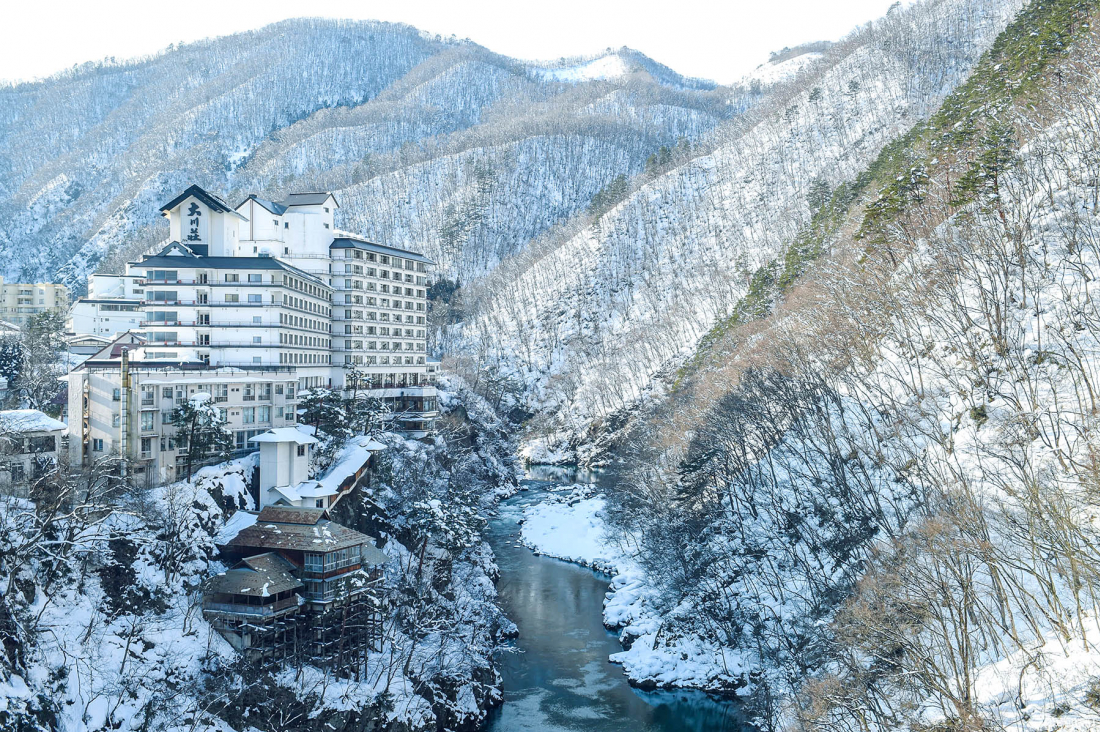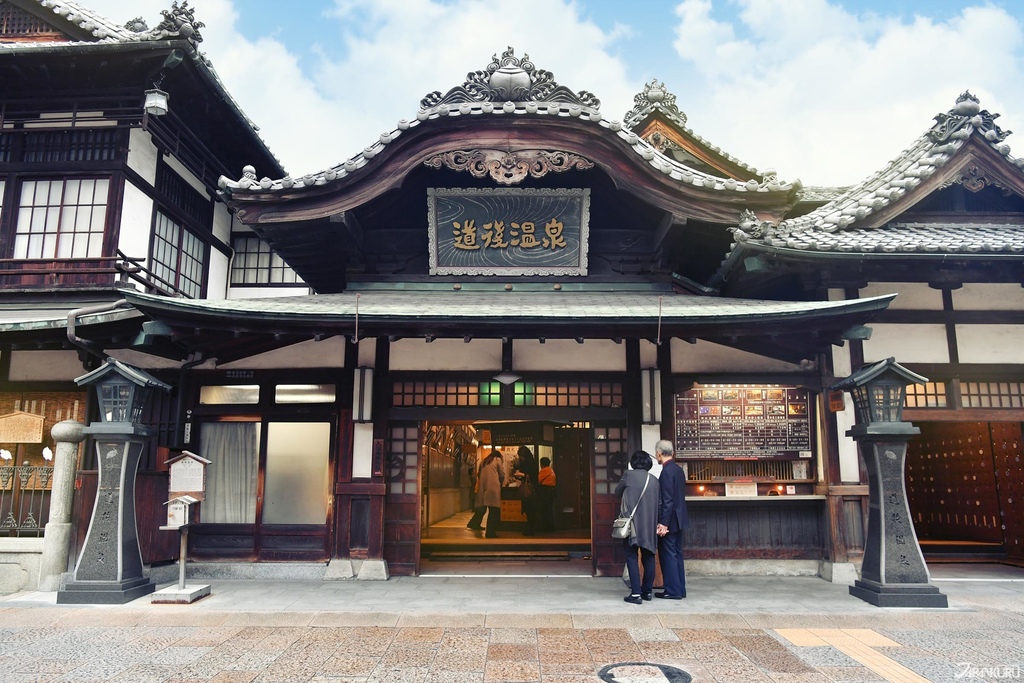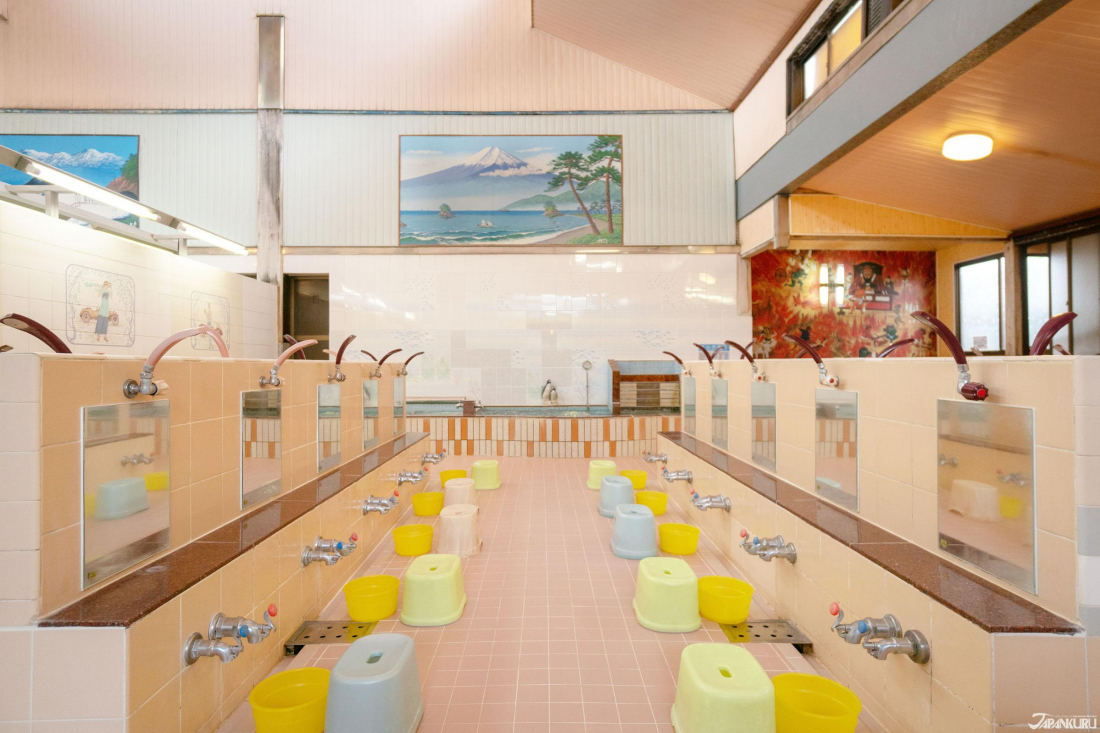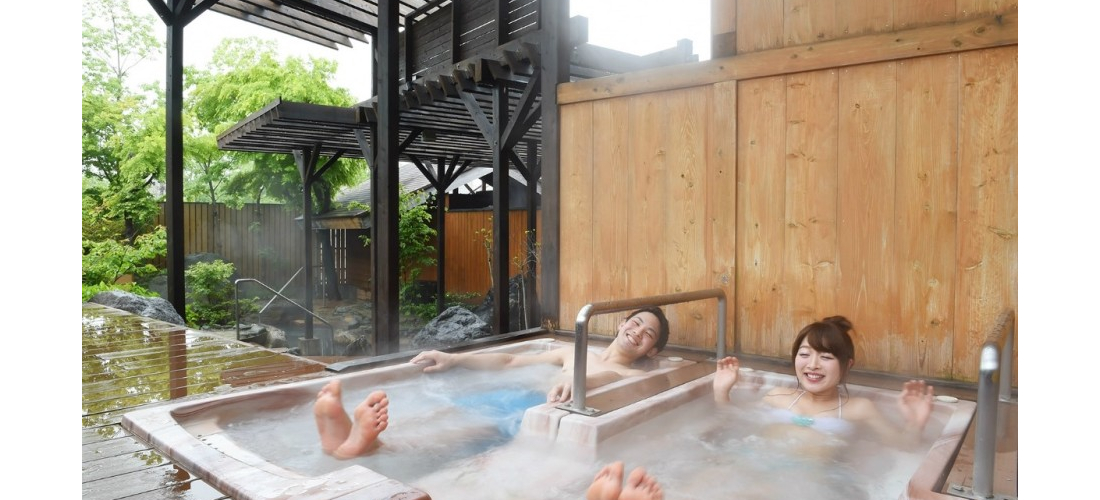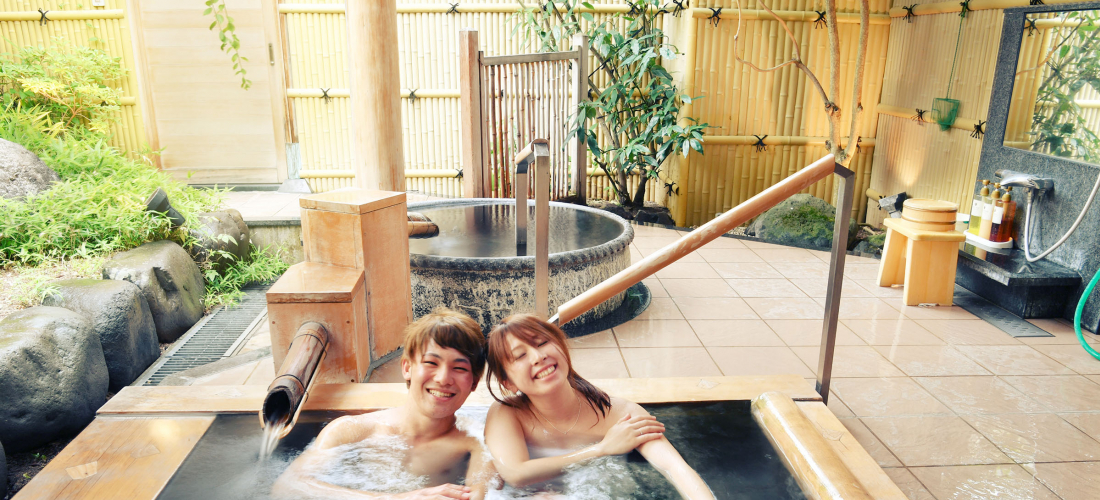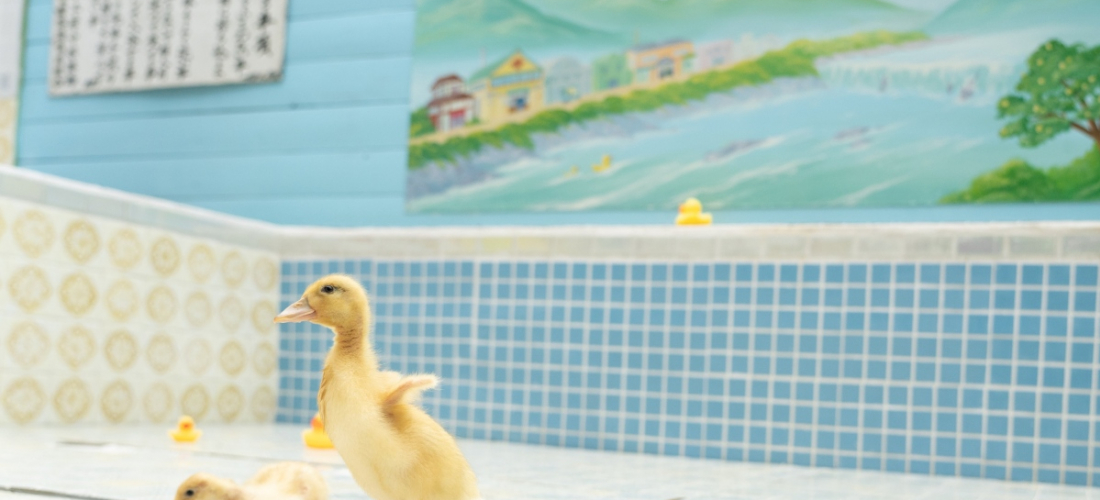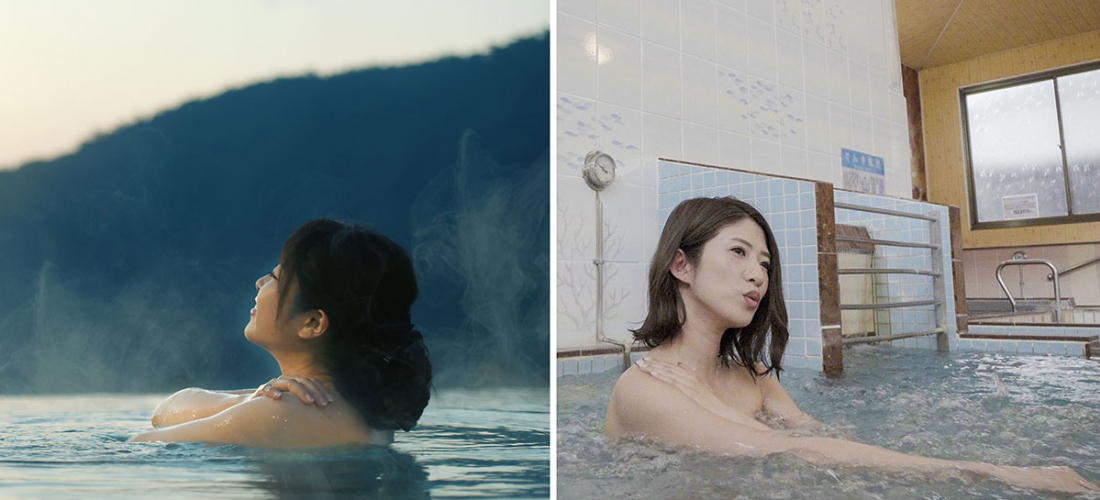CONTENTS
Ready to dive into Japanese bathing culture? First, find out where you’re going!
Japan’s Communal Baths
In Japan, a bath is about more than getting clean, and the country's many famed bathhouses are shared by locals and travelers alike. Japan's communal bath culture goes back thousands of years – there are mentions of certain bathing destinations discussed in Japan's oldest historical records – and to this day, the country is dotted with baths large and small, indoors and out, where people come together to relax in the steaming hot water. For the average visitor to Japan, the minute variations between the many baths around Japan might not seem all that important, but Japanese baths can generally be divided into two types: onsen (温泉) and sento (銭湯), and this difference might just play a part in your next bathtime decision!
Sento & Onsen ・ What’s the difference?
The major difference between onsen and sento is the water that flows into the tubs. In fact, while referring to a place as a "sento" doesn't tell you much about the water quality used at the bathhouse, the term "onsen" is actually restricted by Japanese law. That's because sento baths, though they may be luxurious, are generally filled with heated tap water, while an onsen is a natural hot spring.
Most onsen use modern plumbing of one sort or another to get the water into the baths, which means that once you're inside, sento and onsen can look exactly alike. But to qualify as an onsen, the water must come from an underground source, bubbling up as warm mineral water or even natural steam. In addition, it needs to meet at least one of two qualifications: either the onsen emerges from the ground naturally heated to at least 25°C (77°F), or the water contains a significant amount of natural additives from a designated list – including minerals, various ions, or even radon. Of course, most onsen qualify on both accounts, with water bursting from the earth luxuriously hot, full of natural additions that people will say can cure all sorts of ailments.
Onsen usually rely on the quality of the unaltered natural hot spring water to attract bathers, but sento, on the other hand, often spice things up by offering tubs with all kinds of unique additions. "Kusuri-yu" (薬湯) baths take advantage of Japan's kampo (漢方) medicine culture, which evolved from traditional Chinese medicine, and a variety of natural therapeutic ingredients are added to the water. Around the winter solstice, some bathhouses will even offer baths with yuzu fruit floating in the tubs, a traditional way to welcome the new season with a refreshing aroma.
The water used means that another common difference between your average onsen or sento is location. The islands of Japan were formed by a number of volcanic eruptions, and under the surface, the country is still alive with geothermal activity. That's what heats the water that flows through Japan's onsen bathhouses! But since hot springs depend on this natural underground activity, it means that onsen tend to be clustered out in the countryside, in and around Japan's many mountains (quite a few of which are still active volcanos). Hot springs in the middle of a big city aren't unheard of, but they're certainly not common, which is why "onsen vacations" are a popular form of domestic travel in Japan. People escape the big city and head to one onsen town or another, to relax in the natural baths and get away from it all. But for Japanese city-slickers looking for a quiet shared bath nearby, or travelers hoping for a taste of local culture, a sento is the way to go. Also called "yuya" (湯屋) and "furoya" (風呂屋) – literally hot water shops, or bath shops – sento bathhouses tend to be casual, small-scale affairs, steeped in neighborhood history. (Unless, of course, it's a "super-sento," which is much bigger kind of establishment with extra ammenities!)
See the Difference for Yourself
For a classic onsen experience, it doesn't get much more traditional than a hot spring that's been in use for more than 3,000 years! Dogo Onsen, located in Ehime Prefecture, is one of the oldest onsen resorts in use in Japan (alongside Shirahama Onsen in Wakayama Prefecture and Arima Onsen in Gunma Prefecture), and the hot spring's mythical healing powers have long made it a popular destination for people of all kinds. In Japan's Asuka and Heian periods (approximately the 6th~12th centuries), it was a favorite destination for Japan's imperial family, who came to soak away their royal worries. Nowadays, visitors can enjoy the very same natural hot spring waters in the Dogo Onsen Honkan bathhouse, a historical building dating back to the late 1800s. (Some say this bathhouse helped inspire the Studio Ghibli classic "Spirited Away"!)
Dogo Onsen Honkan (道後温泉本館)
5-6 Dogoyunomachi, Matsuyama, Ehime
Official Website (en)
Takara-yu Sento (タカラ湯)
27-1 Senju Motomachi, Adachi City, Tokyo
Hours: 15:00 – 23:30 (closed Fridays)
Official Website (jp)
Onsen or Sento?
From little local tubs surrounded by pink tile, to elegant outdoor pools lined with stone slabs and filled with gushing hot spring water, Japanese baths run the gamut. But with unique charms to be found at each one, what kind of Japanese bath will you visit first?
For more info and updates from Japan, check Japankuru for new articles, and don't forget to follow us on Twitter, Instagram, and Facebook!
Details
NAME:Japanese Baths
COMMENT
FEATURED MEDIA
VIEW MORE 
A New Tokyo Animal Destination: Relax & Learn About the World’s Animals in Japan
#pr #japankuru #anitouch #anitouchtokyodome #capybara #capybaracafe #animalcafe #tokyotrip #japantrip #카피바라 #애니터치 #아이와가볼만한곳 #도쿄여행 #가족여행 #東京旅遊 #東京親子景點 #日本動物互動體驗 #水豚泡澡 #東京巨蛋城 #เที่ยวญี่ปุ่น2025 #ที่เที่ยวครอบครัว #สวนสัตว์ในร่ม #TokyoDomeCity #anitouchtokyodome

Shohei Ohtani Collab Developed Products & Other Japanese Drugstore Recommendations From Kowa
#pr #japankuru
#kowa #syncronkowa #japanshopping #preworkout #postworkout #tokyoshopping #japantrip #일본쇼핑 #일본이온음료 #오타니 #오타니쇼헤이 #코와 #興和 #日本必買 #日本旅遊 #運動補充能量 #運動飲品 #ช้อปปิ้งญี่ปุ่น #เครื่องดื่มออกกำลังกาย #นักกีฬา #ผลิตภัณฑ์ญี่ปุ่น #อาหารเสริมญี่ปุ่น

도쿄 근교 당일치기 여행 추천! 작은 에도라 불리는 ‘가와고에’
세이부 ‘가와고에 패스(디지털)’ 하나면 편리하게 이동 + 가성비까지 완벽하게! 필름카메라 감성 가득한 레트로 거리 길거리 먹방부터 귀여움 끝판왕 핫플&포토 스폿까지 총집합!
Looking for day trips from Tokyo? Try Kawagoe, AKA Little Edo!
Use the SEIBU KAWAGOE PASS (Digital) for easy, affordable transportation!
Check out the historic streets of Kawagoe for some great street food and plenty of picturesque retro photo ops.
#pr #japankuru #도쿄근교여행 #가와고에 #가와고에패스 #세이부패스 #기모노체험 #가와고에여행 #도쿄여행코스 #도쿄근교당일치기 #세이부가와고에패스
#tokyotrip #kawagoe #tokyodaytrip #seibukawagoepass #kimono #japantrip

Hirakata Park, Osaka: Enjoy the Classic Japanese Theme Park Experience!
#pr #japankuru #hirakatapark #amusementpark #japantrip #osakatrip #familytrip #rollercoaster #retrôvibes #枚方公園 #大阪旅遊 #關西私房景點 #日本親子旅行 #日本遊樂園 #木造雲霄飛車 #히라카타파크 #สวนสนุกฮิราคาตะพาร์ค

🍵Love Matcha? Upgrade Your Matcha Experience With Tsujiri!
・160년 전통 일본 말차 브랜드 츠지리에서 말차 덕후들이 픽한 인기템만 골라봤어요
・抹茶控的天堂!甜點、餅乾、飲品一次滿足,連伴手禮都幫你列好清單了
・ส่องมัทฉะสุดฮิต พร้อมพาเที่ยวร้านดังในอุจิ เกียวโต
#pr #japankuru #matcha #matchalover #uji #kyoto #japantrip #ujimatcha #matchalatte #matchasweets #tsujiri #말차 #말차덕후 #츠지리 #교토여행 #말차라떼 #辻利抹茶 #抹茶控 #日本抹茶 #宇治 #宇治抹茶 #日本伴手禮 #抹茶拿鐵 #抹茶甜點 #มัทฉะ #ของฝากญี่ปุ่น #ชาเขียวญี่ปุ่น #ซึจิริ #เกียวโต

・What Is Nenaito? And How Does This Sleep Care Supplement Work?
・你的睡眠保健品——認識「睡眠茶氨酸錠」
・수면 케어 서플리먼트 ‘네나이토’란?
・ผลิตภัณฑ์เสริมอาหารดูแลการนอน “Nenaito(ネナイト)” คืออะไร?
#pr #japankuru #sleepcare #japanshopping #nenaito #sleepsupplement #asahi #睡眠茶氨酸錠 #睡眠保健 #朝日 #l茶胺酸 #日本藥妝 #日本必買 #일본쇼핑 #수면 #건강하자 #네나이토 #일본영양제 #อาหารเสริมญี่ปุ่น #ช้อปปิ้งญี่ปุ่น #ร้านขายยาญี่ปุ่น #ดูแลตัวเองก่อนนอน #อาซาฮิ

Japanese Drugstore Must-Buys! Essential Items from Hisamitsu® Pharmaceutical
#PR #japankuru #hisamitsu #salonpas #feitas #hisamitsupharmaceutical #japanshopping #tokyoshopping #traveltips #japanhaul #japantrip #japantravel

Whether you grew up with Dragon Ball or you just fell in love with Dragon Ball DAIMA, you'll like the newest JINS collab. Shop this limited-edition Dragon Ball accessory collection to find some of the best Dragon Ball merchandise in Japan!
>> Find out more at Japankuru.com! (link in bio)
#japankuru #dragonball #dragonballdaima #animecollab #japanshopping #jins #japaneseglasses #japantravel #animemerch #pr

This month, Japankuru teamed up with @official_korekoko to invite three influencers (originally from Thailand, China, and Taiwan) on a trip to Yokohama. Check out the article (in Chinese) on Japankuru.com for all of their travel tips and photography hints - and look forward to more cool collaborations coming soon!
【橫濱夜散策 x 教你怎麼拍出網美照 📸✨】
每次來日本玩,是不是都會先找旅日網紅的推薦清單?
這次,我們邀請擁有日本豐富旅遊經驗的🇹🇭泰國、🇨🇳中國、🇹🇼台灣網紅,帶你走進夜晚的橫濱!從玩樂路線到拍照技巧,教你怎麼拍出最美的夜景照。那些熟悉的景點,換個視角說不定會有新發現~快跟他們一起出發吧!
#japankuru #橫濱紅磚倉庫 #汽車道 #中華街 #yokohama #japankuru #橫濱紅磚倉庫 #汽車道 #中華街 #yokohama #yokohamaredbrickwarehouse #yokohamachinatown

If you’re a fan of Vivienne Westwood's Japanese designs, and you’re looking forward to shopping in Harajuku this summer, we’ve got important news for you. Vivienne Westwood RED LABEL Laforet Harajuku is now closed for renovations - but the grand reopening is scheduled for July!
>> Find out more at Japankuru.com! (link in bio)
#japankuru #viviennewestwood #harajuku #omotesando #viviennewestwoodredlabel #viviennewestwoodjapan #비비안웨스트우드 #오모테산도 #하라주쿠 #日本購物 #薇薇安魏斯伍德 #日本時尚 #原宿 #表參道 #japantrip #japanshopping #pr

Ready to see TeamLab in Kyoto!? At TeamLab Biovortex Kyoto, the collective is taking their acclaimed immersive art and bringing it to Japan's ancient capital. We can't wait to see it for ourselves this autumn!
>> Find out more at Japankuru.com! (link in bio)
#japankuru #teamlab #teamlabbiovortex #kyoto #kyototrip #japantravel #artnews
Photos courtesy of teamLab, Exhibition view of teamLab Biovortex Kyoto, 2025, Kyoto ® teamLab, courtesy Pace Gallery

Japanese Makeup Shopping • A Trip to Kamakura & Enoshima With Canmake’s Cool-Toned Summer Makeup
#pr #canmake #enoshima #enoden #에노시마 #캔메이크 #japanesemakeup #japanesecosmetics

⚔️The Robot Restaurant is gone, but the Samurai Restaurant is here to take its place. Check it out, and don't forget your coupon!
🍣신주쿠의 명소 로봇 레스토랑이 사무라이 레스토랑으로 부활! 절찬 쿠폰 발급중
💃18歲以上才能入場的歌舞秀,和你想的不一樣!拿好優惠券去看看~
#tokyo #shinjuku #samurairestaurant #robotrestaurant #tokyotrip #도쿄여행 #신주쿠 #사무라이레스토랑 #이색체험 #할인이벤트 #歌舞伎町 #東京景點 #武士餐廳 #日本表演 #日本文化體驗 #japankuru #japantrip #japantravel #japanlovers #japan_of_insta

Japanese appliance & electronics shopping with our KOJIMA x BicCamera coupon!
用JAPANKURU的KOJIMA x BicCamera優惠券買這些正好❤️
코지마 x 빅 카메라 쿠폰으로 일본 가전 제품 쇼핑하기
#pr #japankuru #japanshopping #kojima #biccamera #japaneseskincare #yaman #dji #osmopocket3 #skincaredevice #日本購物 #美容儀 #相機 #雅萌 #日本家電 #일본여행 #면세 #여행꿀팁 #일본쇼핑리스트 #쿠폰 #일본쇼핑 #일본브랜드 #할인 #코지마 #빅카메라 #japankurucoupon
MAP OF JAPAN
SEARCH BY REGION

LATEST
VIEW MOREEVENT CALENDAR
VIEW MORE
